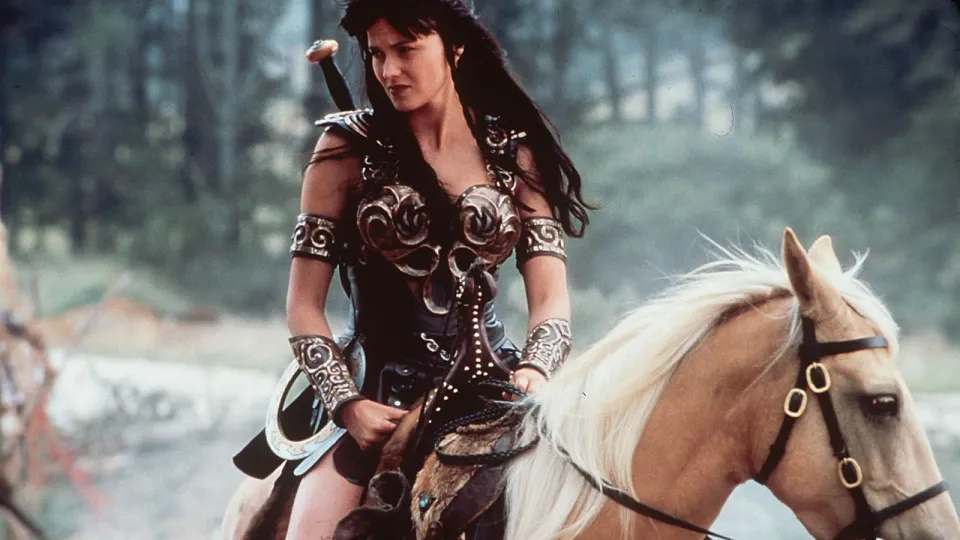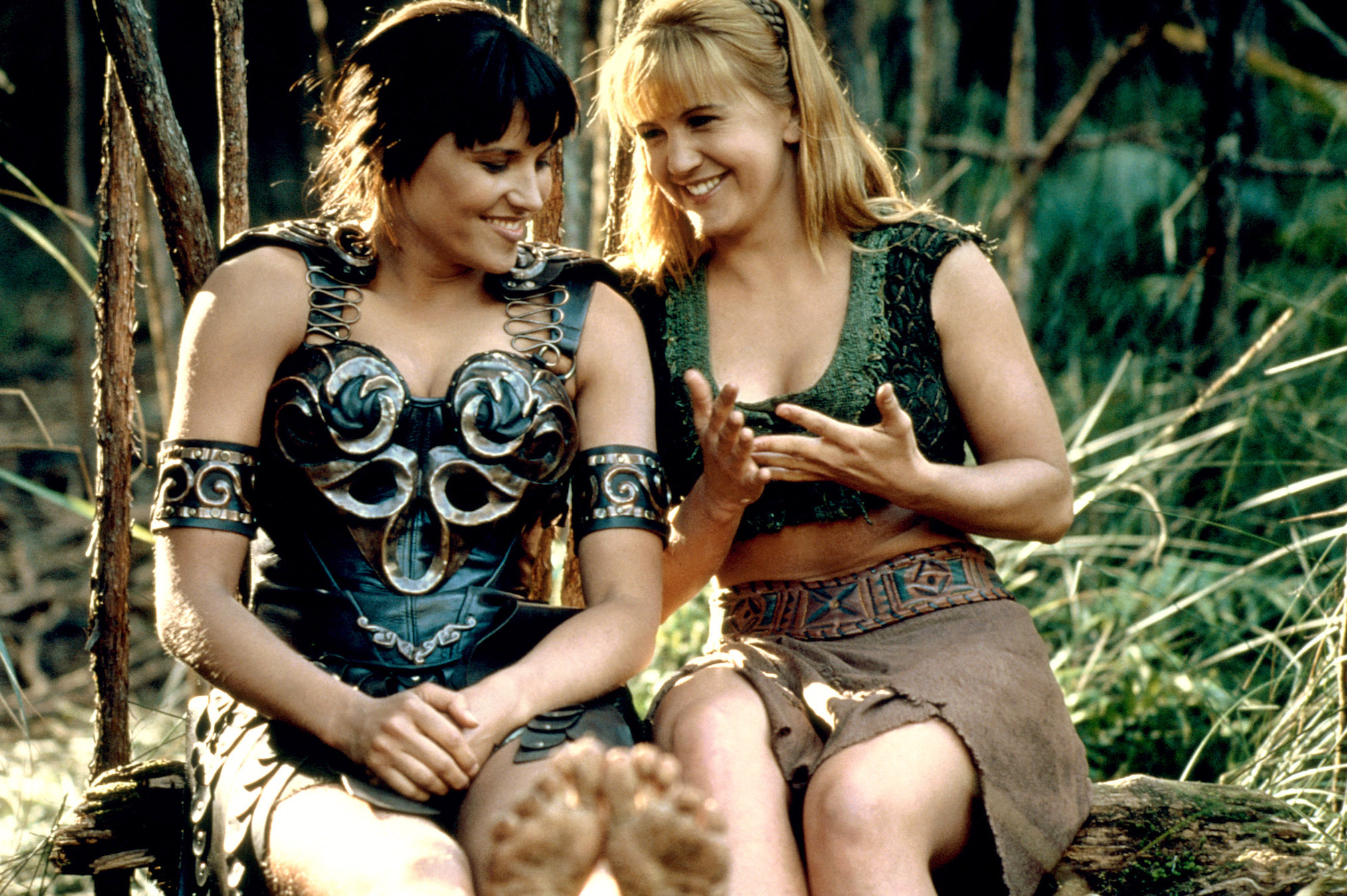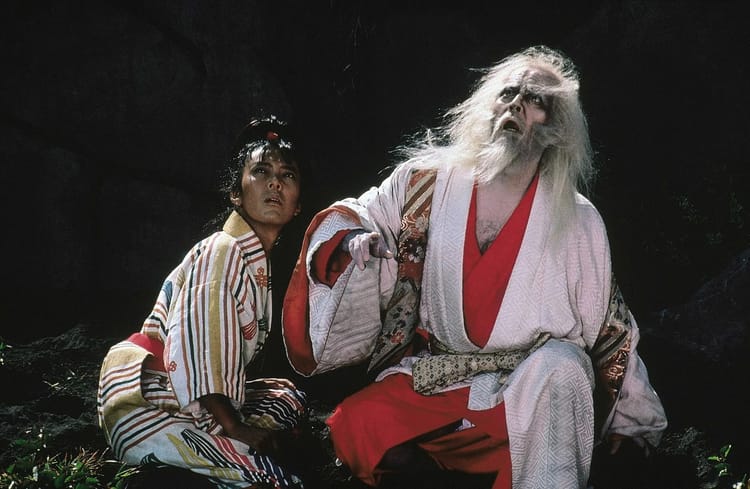Looking for transformative justice in Xena: Warrior Princess

(Welcome to the Wednesday newsletter! Each week, I’m publishing a new pop culture essay from a freelancer. Remember: Your subscription fee helps me pay these freelancers for their efforts! This week: Jesse Eisenmann on the surprisingly sophisticated transformative justice of Xena: Warrior Princess.)
In 21st century media we have a plethora of antiheroes and baddies that we root for. We also have heightened interest in the ethos of transformative justice. But we aren’t exactly overflowing with choices when it comes to stories that might blend these two tones, telling stories about antiheroic figures who later try to atone for their worst actions.
Enter the high-trilling-yodel of Xena: Warrior Princess, the quasi-lesbian, ass-kicking television program that ran for 134 episodes from 1995 to 2001. The show creates space — albeit often absurd and outlandish space — for reformation, accountability, love, and the complications of forgiveness. What do we stand to learn from a pointed rewatch of the show through the lens of transformative justice?
In case “Xena: Warrior Princess” only prompts mental images of leather armor, high kicks, and not much else, the series follows Xena (Lucy Lawless), who travels through ancient Greece with her trusty sidekick/love Gabrielle (Renee O'Connor). The two help the helpless and protect the weak. They rescue damsels, recover artifacts, and reunite loved ones. It’s classic feel-good TV.
Xena is not a typical TV hero. She’s no fresh-faced do-gooder. She is a reformed warlord, one who was called the “Destroyer of Nations.” Xena’s past would put any modern antihero to shame. When the series begins, however, she has forsaken her evil ways and vowed to repair the harm she’s caused.
So let’s list her misdeeds, shall we? She set entire villages on fire, displaced hundreds (if not thousands!), orchestrated battles in which soldiers and civilians died, backstabbed allies, and kidnapped at least one child. That’s a lot of baggage for the titular character of a daytime television program. It is exactly the kind of outsized, over-the-top past that would render many other characters unsalvageable without a second thought.
So how does Xena live with herself? The show has many answers; each episode is a response, in its own way, to how she chooses to live now. But to rein in the stakes for the mere mortals among us, the question becomes much more human in scope: How do you repair damage you caused? How do you move through the world in a way that builds back what you had a hand — maybe even a big hand — in destroying? What does that look like?
Well, just what does transformative (or restorative) justice even look like?
Howard Zehr of the Zehr Institute for Restorative Justice, lays it out: “A just response acknowledges and repairs the harm caused by, and revealed by, wrongdoing (restoration); encourages appropriate responsibility for addressing needs and repairing the harm (accountability); involves those impacted, including the community, in the resolution (engagement).” Restoration, accountability, engagement. Got it.
And lest we hesitate to apply “modern” concepts of justice on to the ancients (or the fictional ancients), Mia Mingus of Transform Harm reminds us of the history and ongoing practices of non-carceral justice by marginalized communities for generations. Restorative justice and its processes are ways of being that predate our modern conception of them. For the visual learners among us, Xena gives an example of how it might look like to actually commit to the process.

Xena is deeply connected to the obligations created by her harm; to heal and put things right is at the center of her mission, which is to say “restoration” is the center of the show. Xena is not a look at someone who has perpetrated extreme harm and is stuck in its cycle. Rather, it is centered on the ongoing actions the titular character is consistently taking to directly repair the harm she has caused and interrupt similar harm from others she either does not know or trained herself — accountability and engagement, as it were.
The series is particularly interested in one of Xena’s victims: Callisto. When Callisto was young, she witnessed the death of her mother, her father, and her sister, along with the total destruction of her village — all at the hands of Xena. The immense trauma suffered by a displaced, orphaned young girl turned into a deep-seated desire for vengeance. Her desire for vengeance isn’t entirely undeserved, but Callisto perpetrates the same harm that was done unto her. She raids villages, slaughters civilians, and does so in Xena’s name. She hopes to tarnish the “new” Xena and reclaim Xena as a globally scorned villain.
What does it matter to Callisto, having grown up with no family to teach her kindness and no home to feel safe in, that Xena knows better now? What space is there for Callisto in a world where Xena is a hero? There is no room for redemption in Callisto’s ongoing trauma. But there is no justice in repeated damage.
Xena, after all, had a tragic backstory too. As a young girl, she lost her family to a warlord, then vowed her own revenge. Her mission, in the beginning, was simply to avenge her village’s losses against the gang that inflicted them. But she was good at warfare, and was swept up in the world of pillaging-for-pillaging’s-sake. It all took a turn for the truly evil, however, when her toxic boyfriend Julius Caesar (yes, that Julius Caesar) double-crossed her, stole her army, and left her to die. Needless to say, Xena lost all sense of humanity. Enter Xena the Destroyer of Nations, ready to burn down the world.
Was Xena not once also a victim of someone else’s rage? Are all, or any, of Callisto’s actions negated by being the result of trauma? Are Xena’s? Are anyone’s? How does it stop? Where does it end?
We are not lost at sea. Mingus says of transformative justice: “Changing your behavior is a fundamental part of taking accountability for harm you’ve done and it is often one of the main things survivors want: I just don’t want them to do this to anyone else. I don’t want anyone else to have to go through what I had to go through.”
In an episode of Xena aptly titled “Forgiven,” Xena herself says, “You are what you do. You can recreate yourself every second of your life.” You will not be granted the mercy, forgiveness, or good will of all who have come under your harm, nor do you have to offer those gifts to those who have harmed you. But space for changed behavior is space for a better world.
Callisto, for the record, does change her behavior, eventually. She is given a second (millionth?) chance to do good and turns her immense power to protecting others, continuing a complicated journey of humility, restoration, and accountability.

Justice ripples outward. Xena’s most persistent legacy is shown, at the end of the series, to be her influence on Gabrielle, and Gabrielle’s ongoing work in the world. Gabrielle is introduced at the beginning of the show as a young, innocent girl, not yet saddled with the baggage of lost family or hometowns. Her journey is one of an optimistic and curious storyteller, with an open heart and some youthful foolishness. Gabrielle lives, loves, loses, even kills. She dedicates her life to non-violence; and she rediscovers her role as an empowered warrior. Whatever soft part of Xena was never fully hardened in all of her years as a warlord lives on in what she shared with Gabrielle. She is a window onto a better future.
Imagining a better world is the first step toward making one. So why not imagine more incarnations of transformative justice x baddie? They might be outrageous and outlandish. They might be humble and contemporary. Or they might be ancient Greek sapphics with a penchant for sword fighting. Let’s not have a death of imagination when it comes to these ideas. Let the world in our screens inspire us to be better in our own.
Jesse Eisenmann is a white, queer, and disabled artist/writer living in Minneapolis. You can find more of their work on Instagram.
Episodes is published three times per week and edited by Emily VanDerWerff. Mondays feature her thoughts on assorted topics. Wednesdays offer pop culture thoughts from freelance writers. Fridays are TV recaps written by Emily. The Wednesday and Friday editions are only available to subscribers. Suggest topics for future installments via email or on Twitter. Read more of Emily's work at Vox.





Member discussion